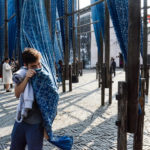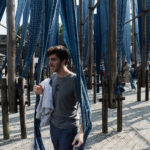A Day in Wuzhen, the so-called Venice of the East
This past Friday my classmates and I ventured to Wuzhen, a water town located between Shanghai and Hangzhou. When we arrived in Hangzhou in August, I began researching nearby places we could travel to in our free time, and I read a lot about the gorgeous water towns dotted throughout China. This blog post about nearby Wuzhen and all of its lovely canals and activities convinced me that we needed to go.
I had forgotten about the town until a couple of weeks ago, when we brought it up to our school’s staff and mentioned we may wanna go. To our surprise and delight, they said that we could use some of our student activities budget to cover our bus tickets and entrance fees to the town. We determined that we had a rare free day last Friday, and we all pulled ourselves together enough to go!
Huge shoutout to our health and safety coordinator, Ann, for buying our return bus tickets and our entrance tickets, and for making sure we made it to our buses! Mandarin and just the general confusion of China can make travel difficult, but having Ann in our lives makes everything easier!
So, with Ann’s help, we found ourselves on a 2 hour bus journey to the water town early on a Friday morning. There was some weirdness involved where we were picked up on one bus, taken to a bus station, sat in a small and weird room filled with cigarette smoking Chinese men, and then led to another huge coach bus that we had to ourselves, but all in all we made it to the water town in one piece.
When we got there, we scanned our tickets for the West scenic area of Wuzhen, which were 120 yuan (about $17) a person. There is also an East scenic area of the town, which costs 100 yuan to enter, but just a day in the water town only really allows for exploring one of the scenic areas. From the gate, we set off to explore what the town had to offer.
The Indigo Dyeing Workshop
The town is full of instructional workshops, where visitors can observe craftsmen creating local wares and can pay to participate themselves. The first one we came across, right near the entrance, was the Indigo Dyeing Workshop. Here, they create patterns on fabric and dye them with indigo using traditional techniques.
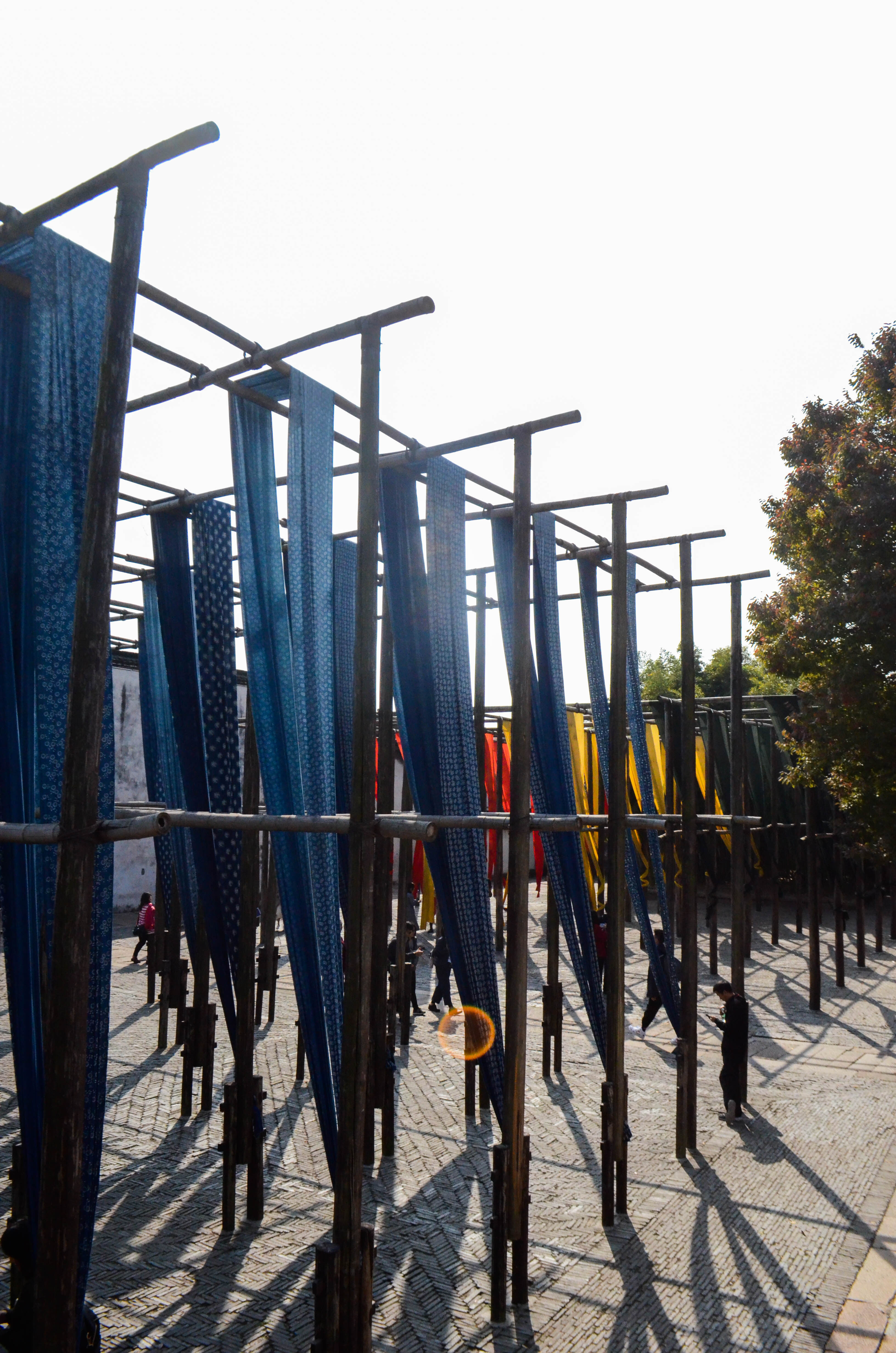
Dyed fabrics drying in the large drying yard outside of the workshop
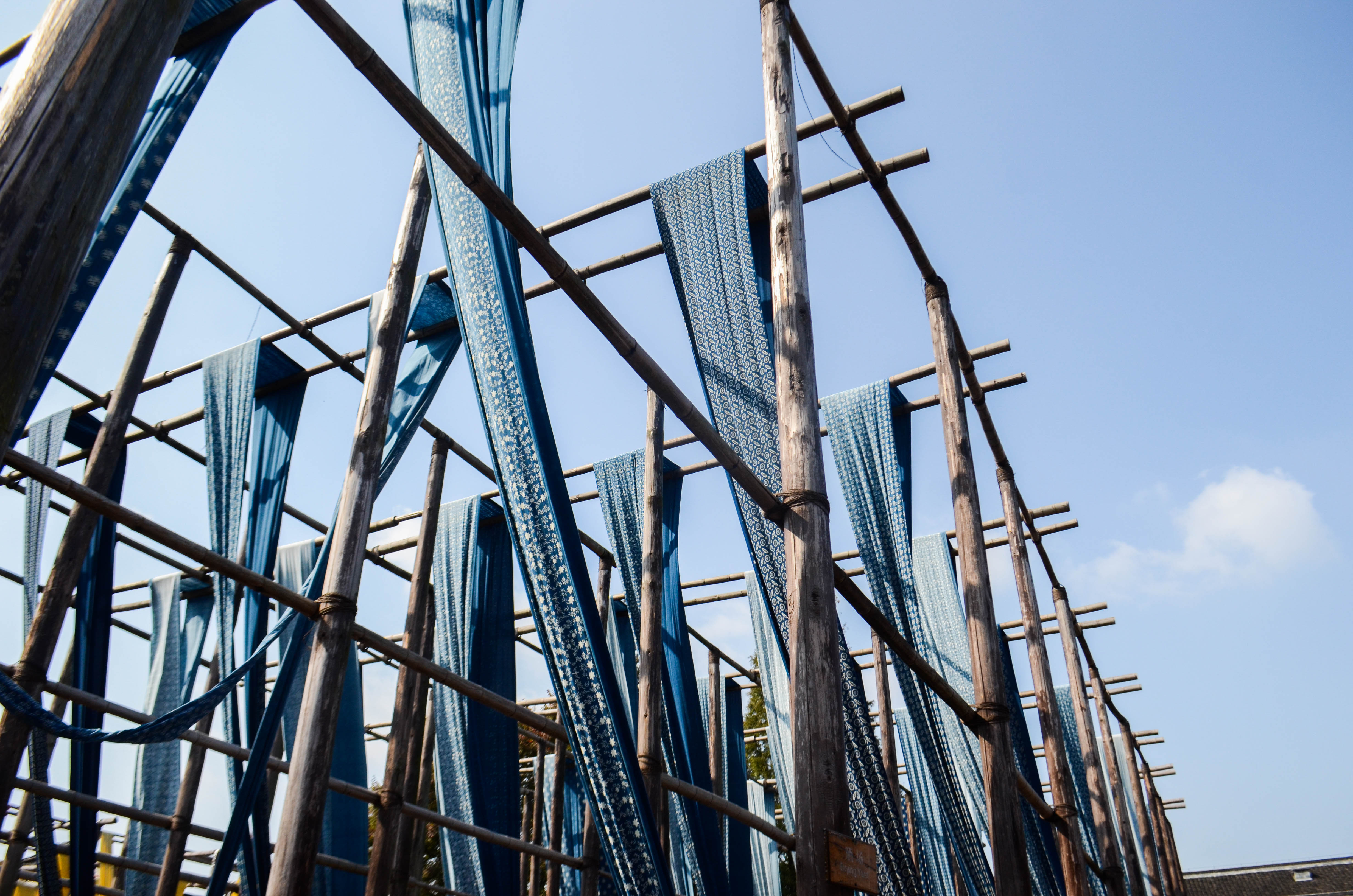
Dyed fabrics drying in the large drying yard outside of the workshop
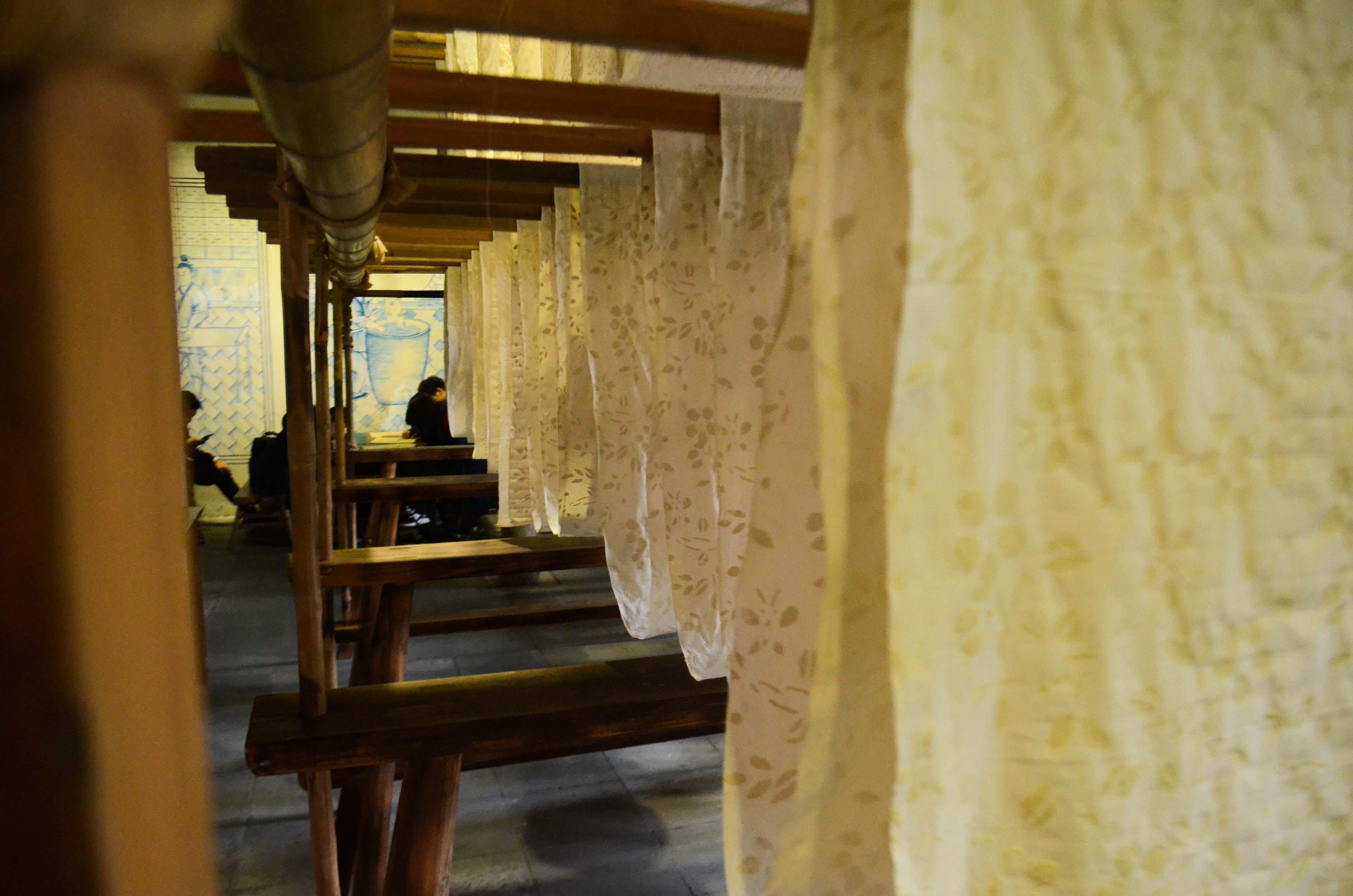
Fabrics that have been stamped with patterns before being dyed
- Ross among the drying fabrics
- Ross among the drying fabrics
The Wedding Museum
This museum featured items used in traditional Chinese weddings. Here, visitors can pay to dress up in traditional wedding outfits, and can also take a look at wedding beds, hairpieces, passports, and a lot of other interesting items that gave a glimpse into weddings, which are an important part of any culture.
The Hunt for Food
So, it turns out food is hard to come by in Wuzhen for 6 foreign students. We sat down at SIX different restaurants, all of which had eerily similar menus, and tried to order some of the more affordable items on the menu. Every single restaurant turned us down, and claimed that they only had certain dishes – a fish dish, a lamb dish, and a duck dish, all of which were quite pricey. It was odd and frustrating and took up a lot of our time.
We eventually found a noodle restaurant with somewhat reasonable prices, and a few of us ordered a chicken rice dish that wasn’t too expensive, but was also twice the price of what we pay for a huge meal in our university’s cafeteria. When it came out, it was soooo small. And it was definitely not chicken. It was bits of pork (we think) on the bone with an itty bitty bit of rice.

My tiny bit of rice and pork for lunch
I think I ate it all in about five bites. So, still hungry, we set off in search for more food. We eventually found some snacks – ice cream, candy, and sticky rice balls, which the town is known for. It wasn’t a true meal, but we were at least filled up on our numerous snacks.
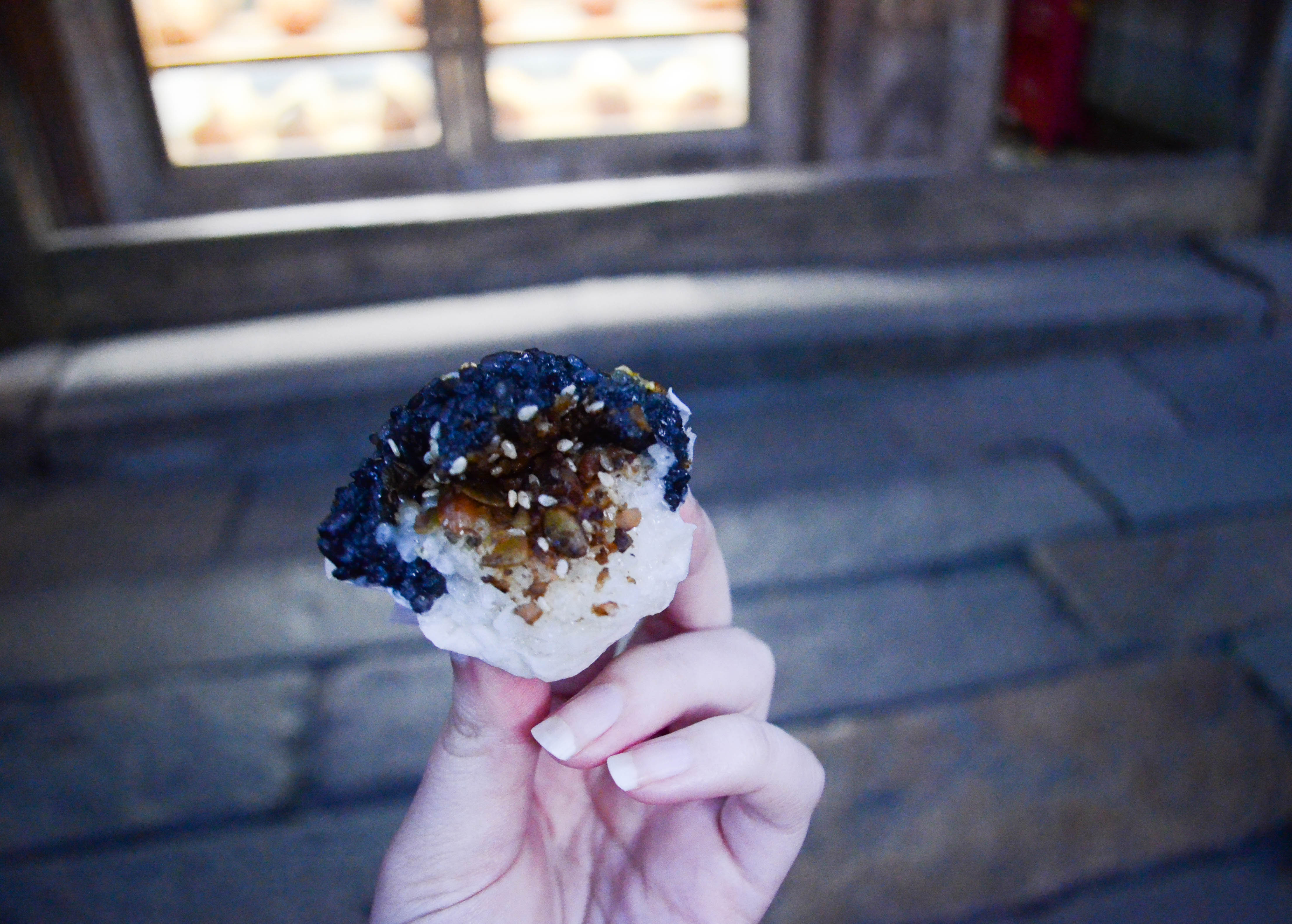
A sticky rice ball with black and white rice stuffed with nuts
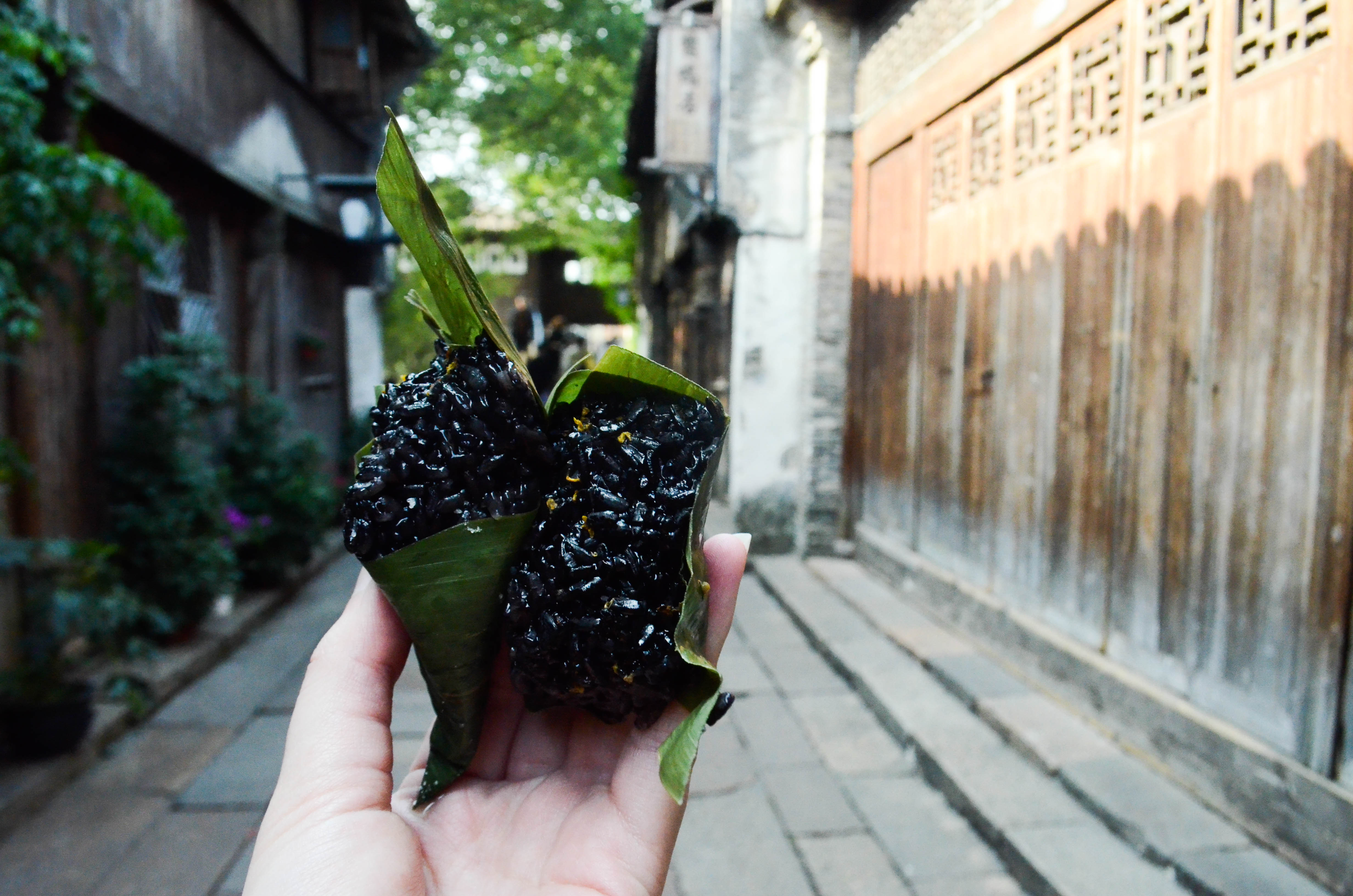
Black sticky rice balls
The Chinese Foot Binding Culture Museum
For thousands of years, women in China were expected to bind their feet to extremely small sizes – the ideal size was 3 inches, and was called the ‘Golden Lotus’. From ages 5 to 8, young girls went through the painful process of having their feet broken and reshaped to conform to China’s societal standards of beauty. Up until the early-ish 1900s, it had to be done if a girl wanted any marriage prospects. It’s a pretty terrifying practice, and the museum does a good job of not really trying to sugar-coat it.
The museum presents information on the practice, acknowledging that it was horrible while giving historical and cultural context. The museum also showcases the tiny shoes that women used to wear. These itty bitty shoes are both marvelous and horrendous, because while many are quite beautiful, it is easy to imagine the immense pain and suffering that came along with being able to wear them.
Here is a pretty good write up on the practice if you are interested.

Tiny heeled boots in the Chinese Foot Binding Culture Museum

Tiny shoes displayed in the Chinese Food Binding Culture Museum

Boots displayed in the Chinese Foot Binding Culture Museum

Tiny shoes with heels in the Chinese Foot Binding Culture Museum
The Yida Silk Workshop
This workshop shows visitors many of the steps that go into producing silk goods. In one room, women sat at wooden looms weaving the silk – one loom even required two women working together, one at the front and one sitting on top. Another room featured an old machine that worked the silk cocoons into thread.
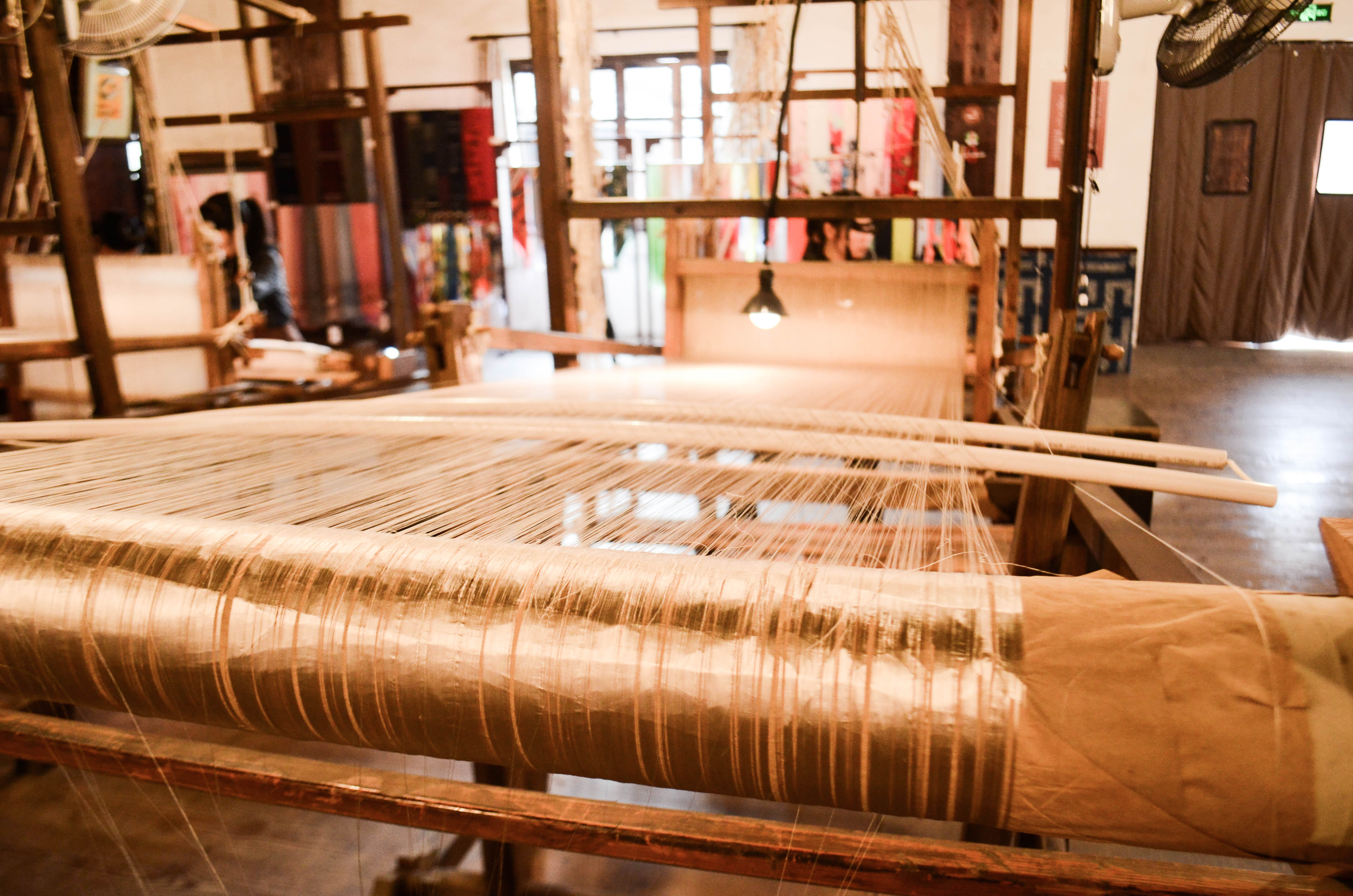
A wooden silk loom
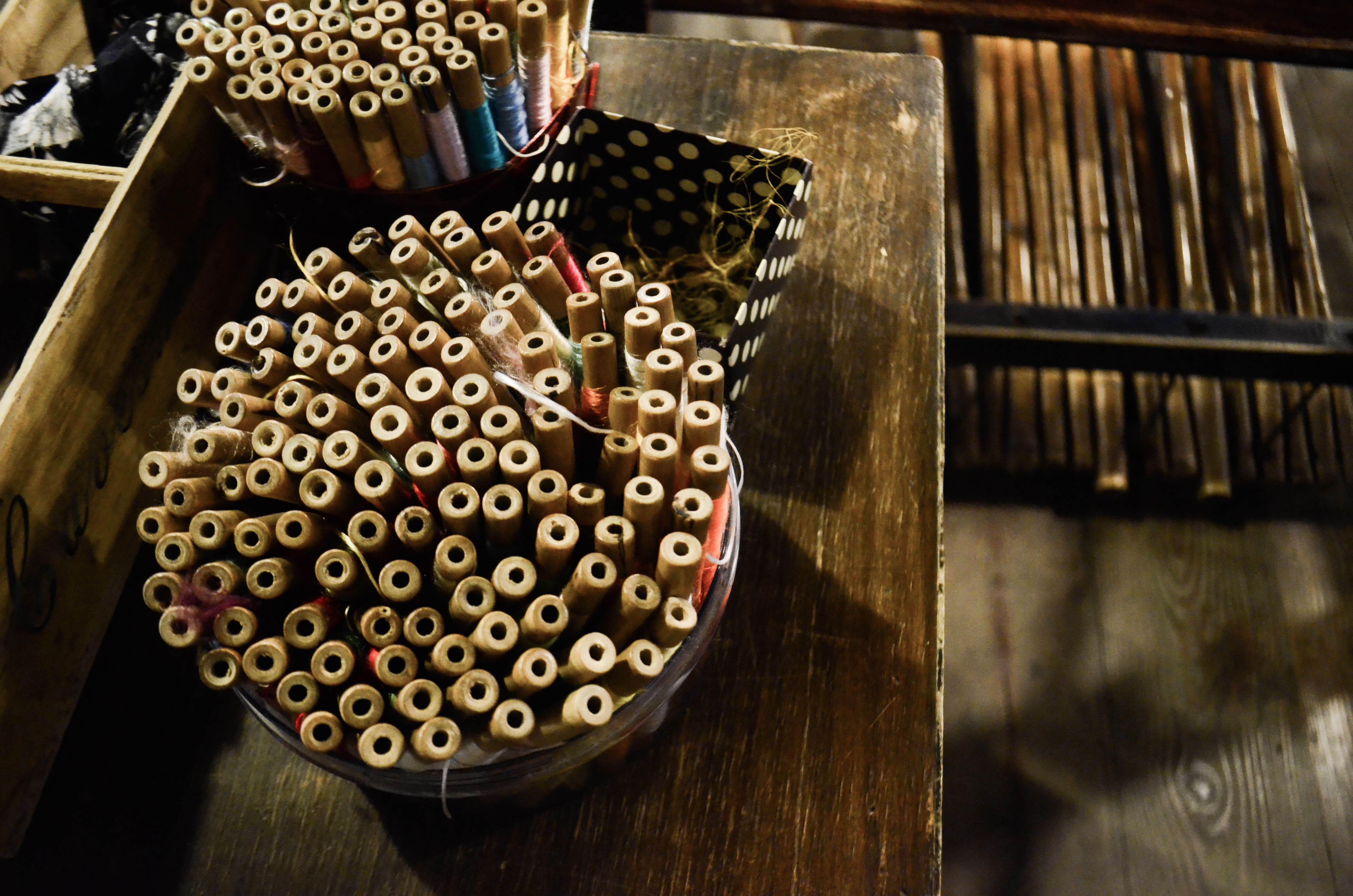
Spools of colored silk thread to be woven on a loom
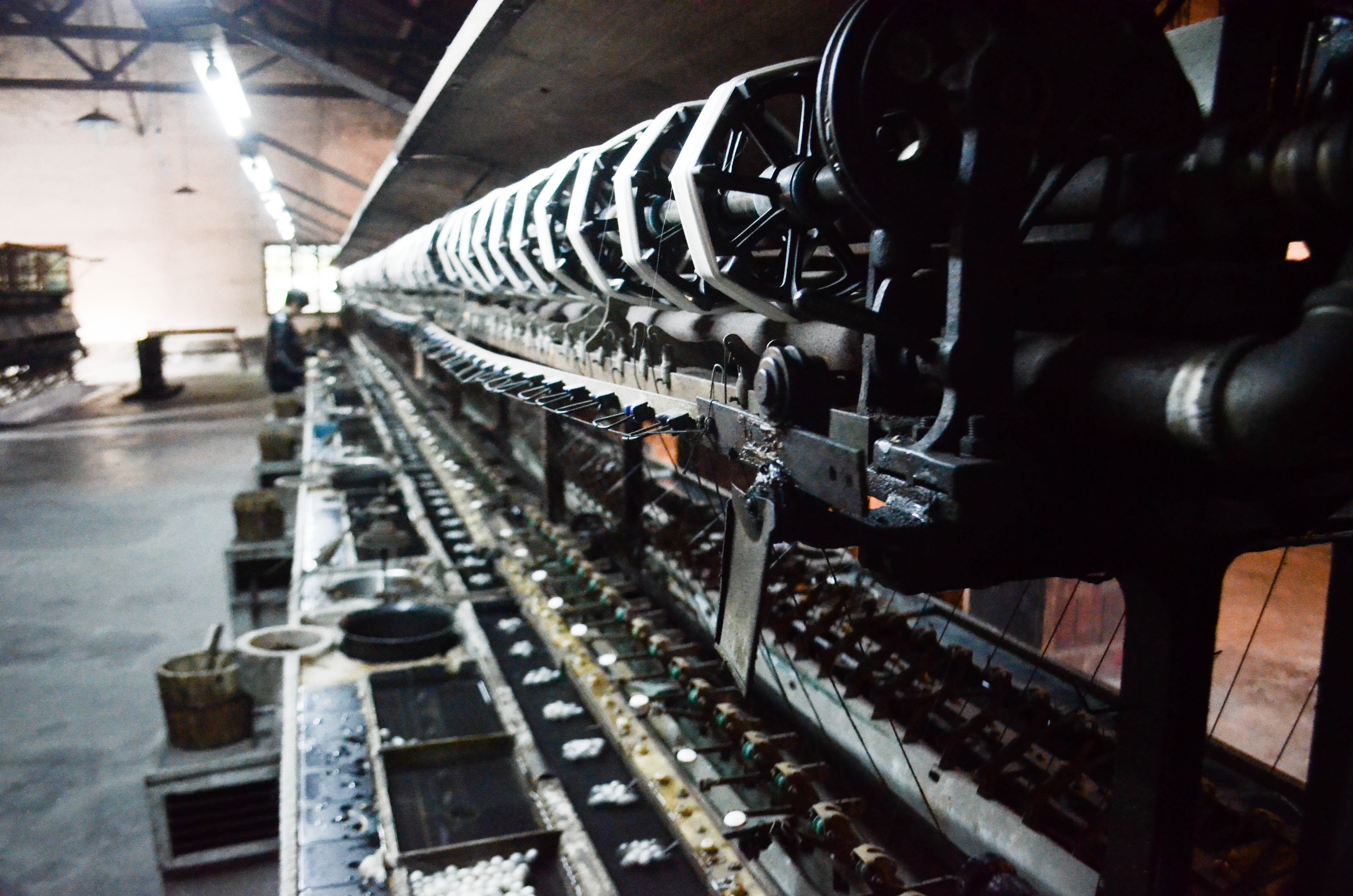
The machine that produces silk thread from the silk cocoons
Enjoying the Views
We spent the majority of the day simply wandering through the village, down alleys and over bridges, and enjoying the beautiful views we came across along the way. Here are some of the photos I captured throughout the day.
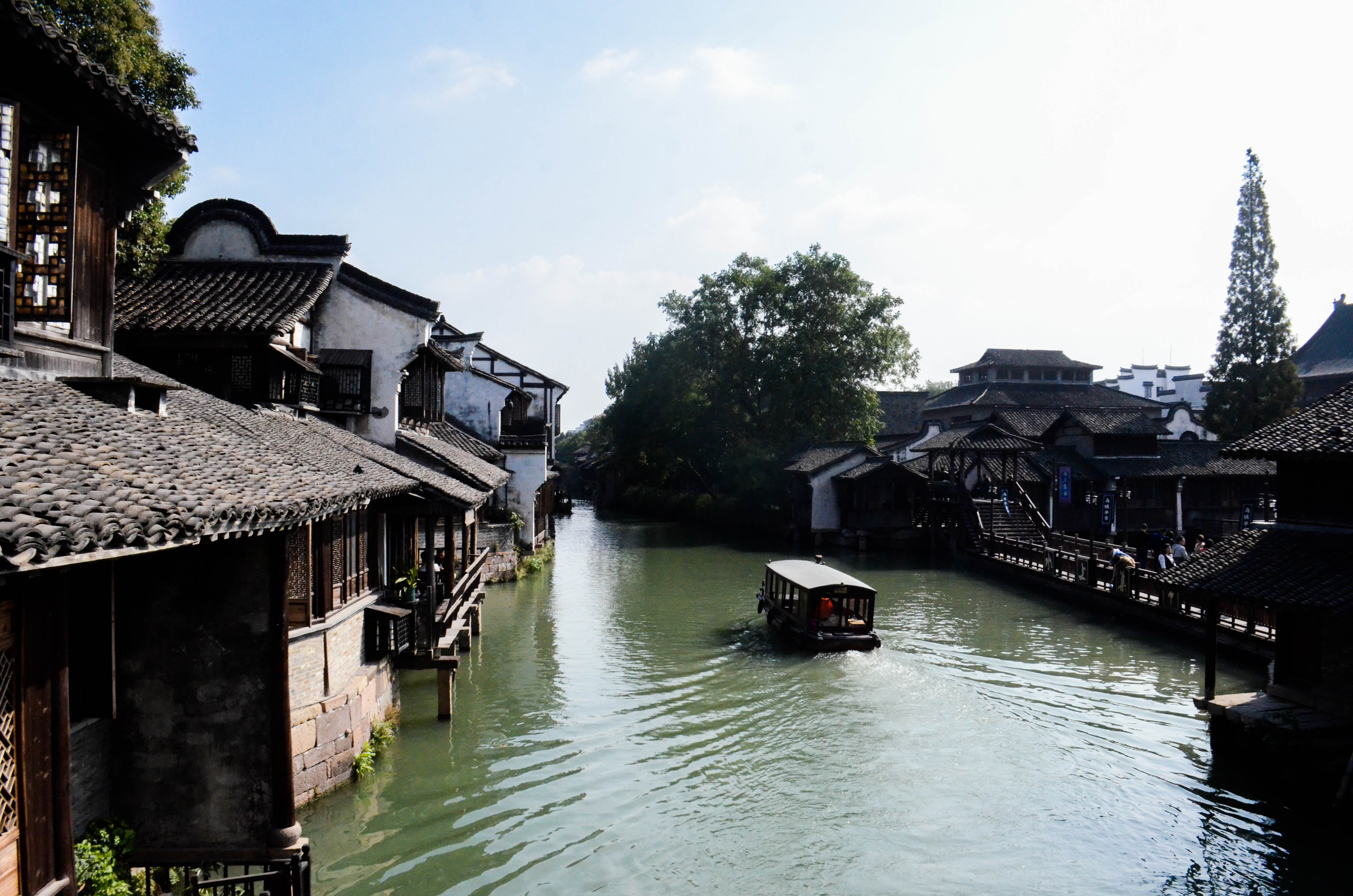
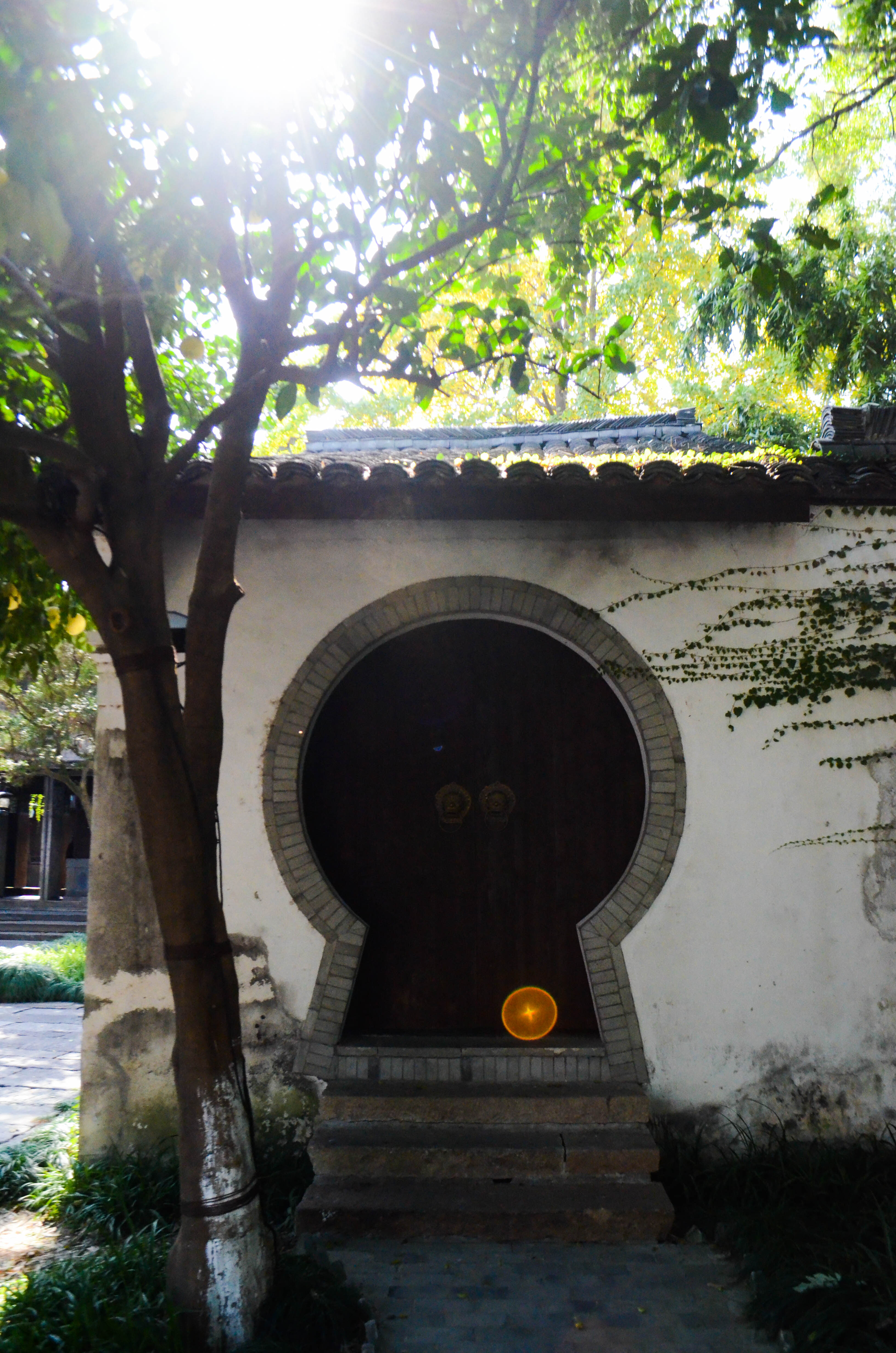
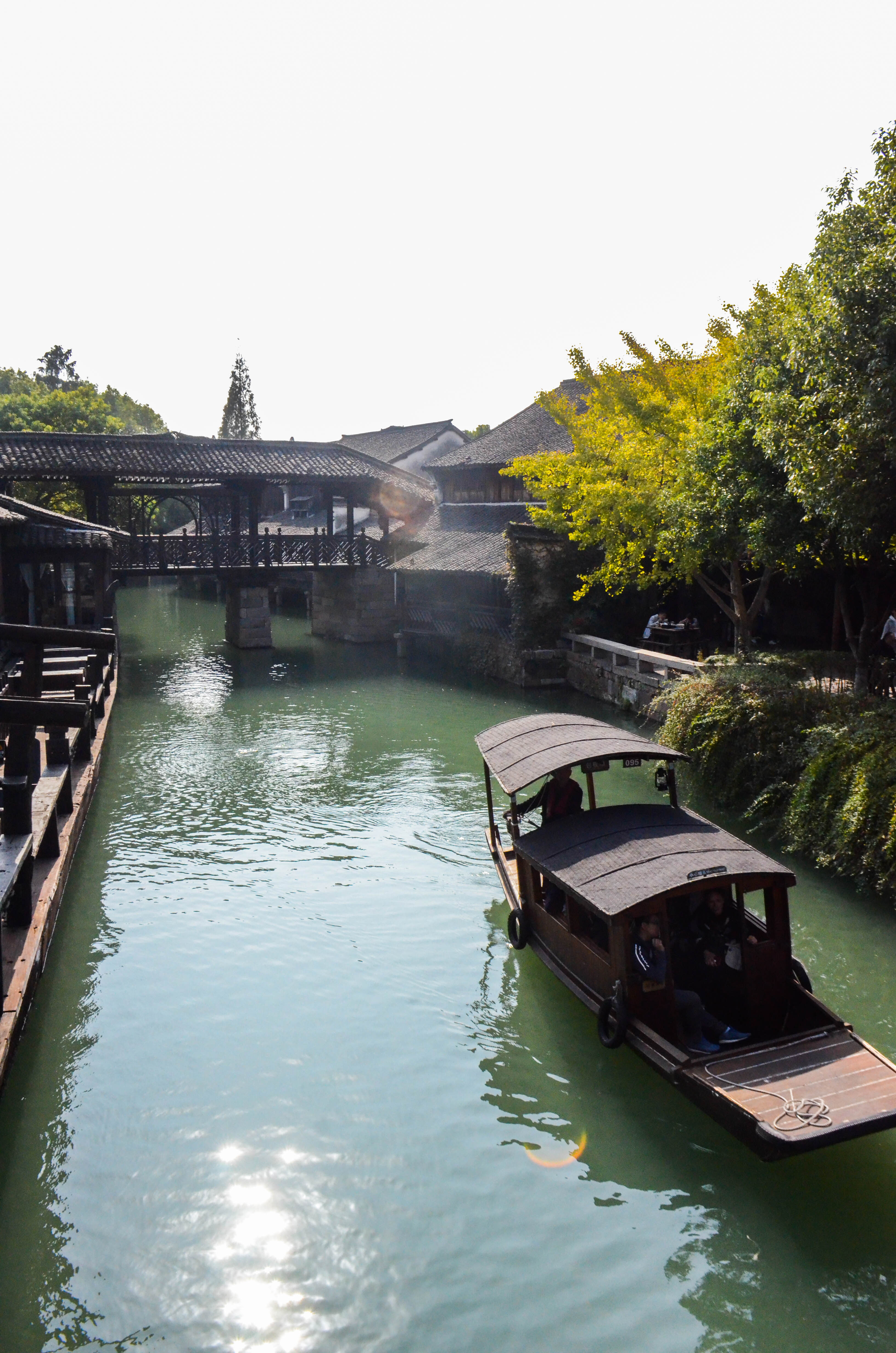
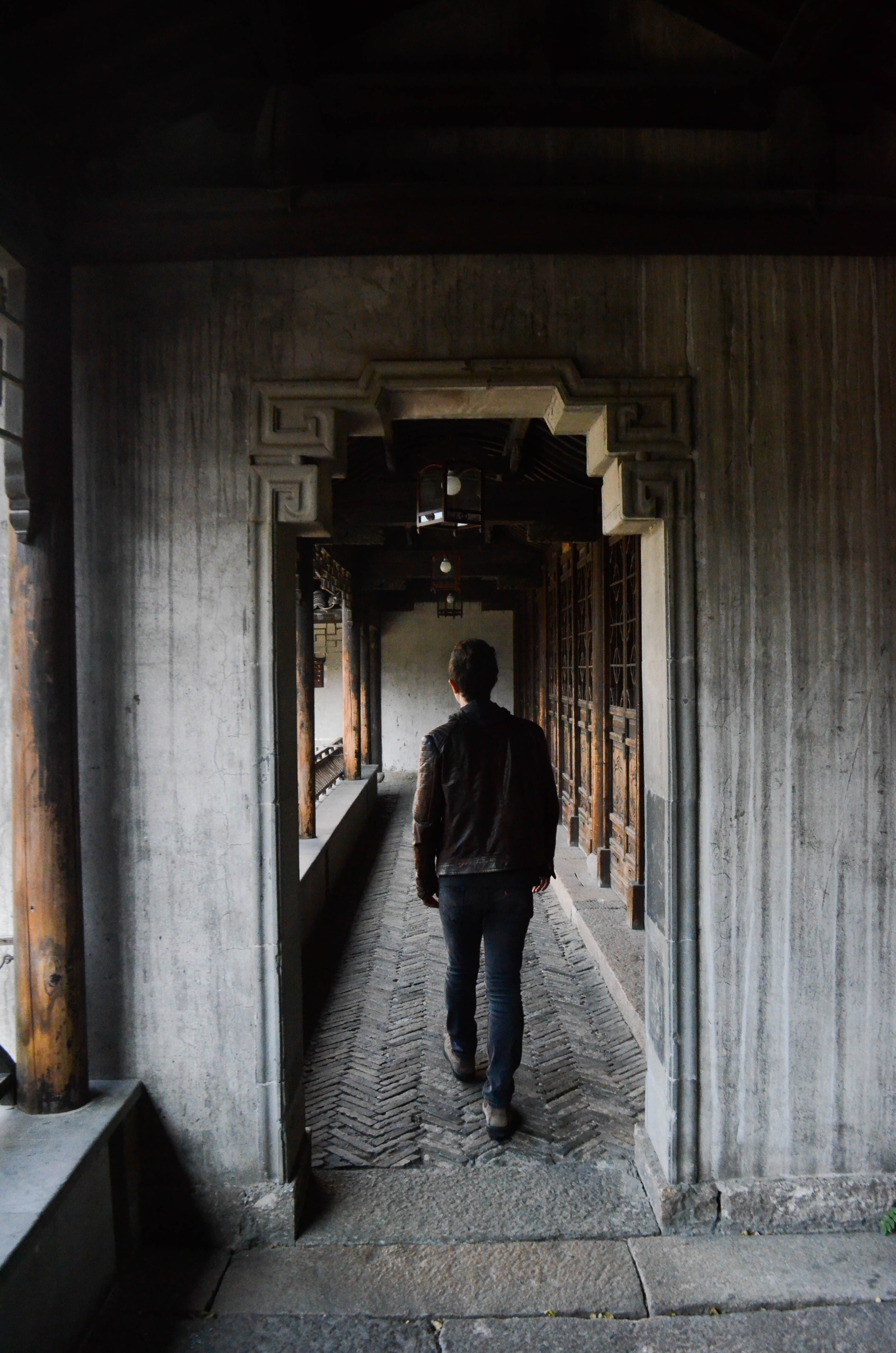
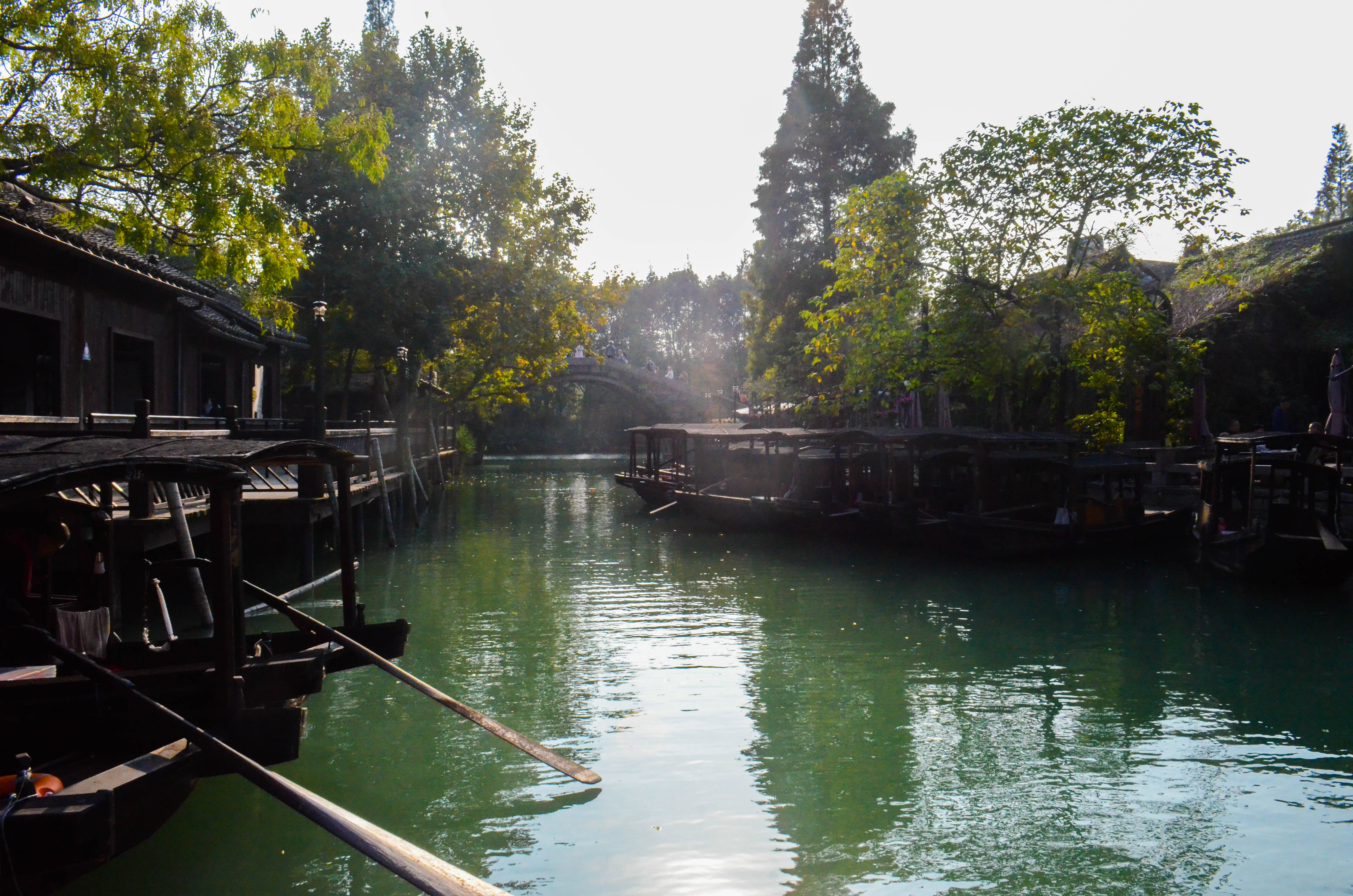
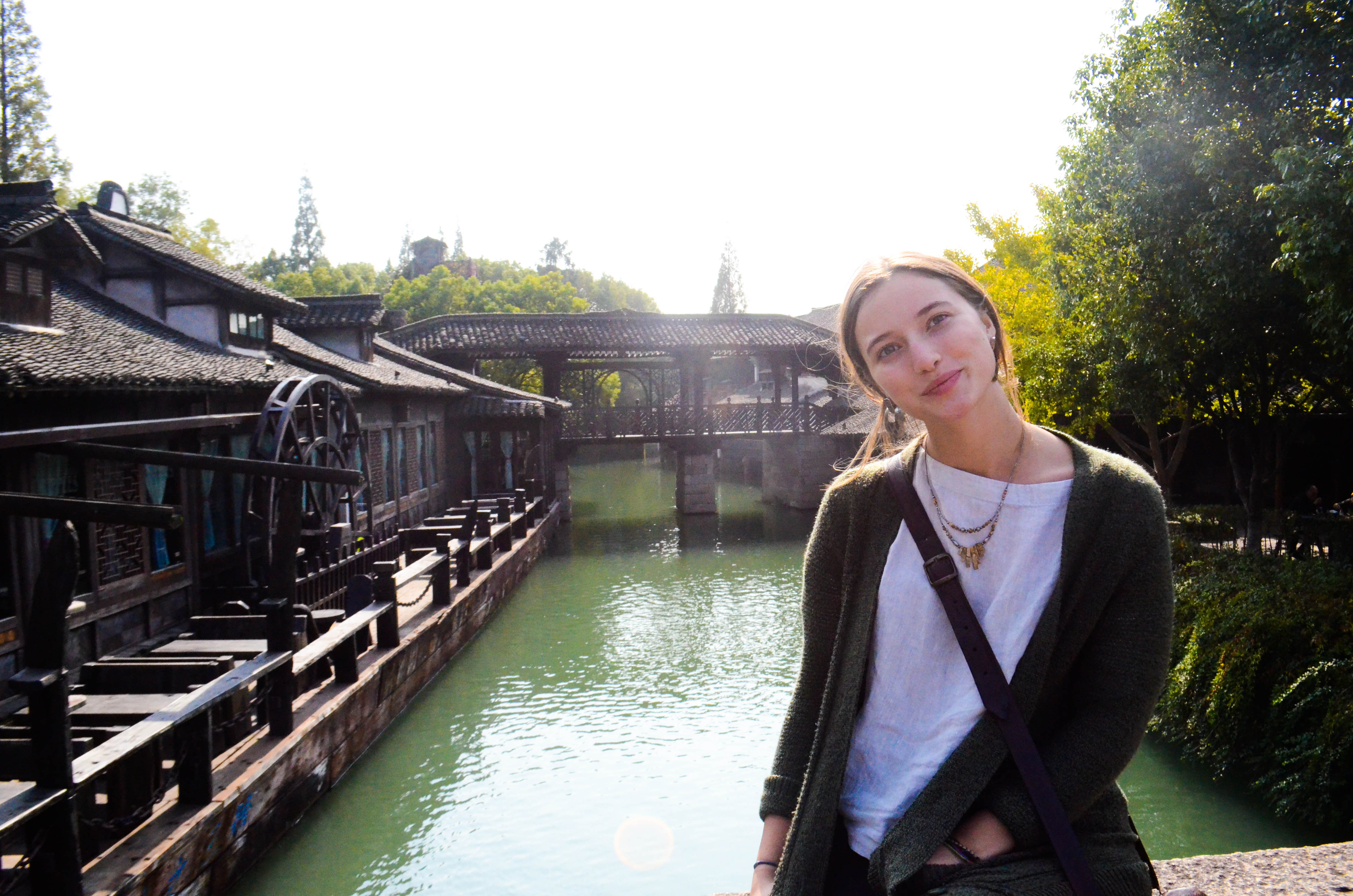
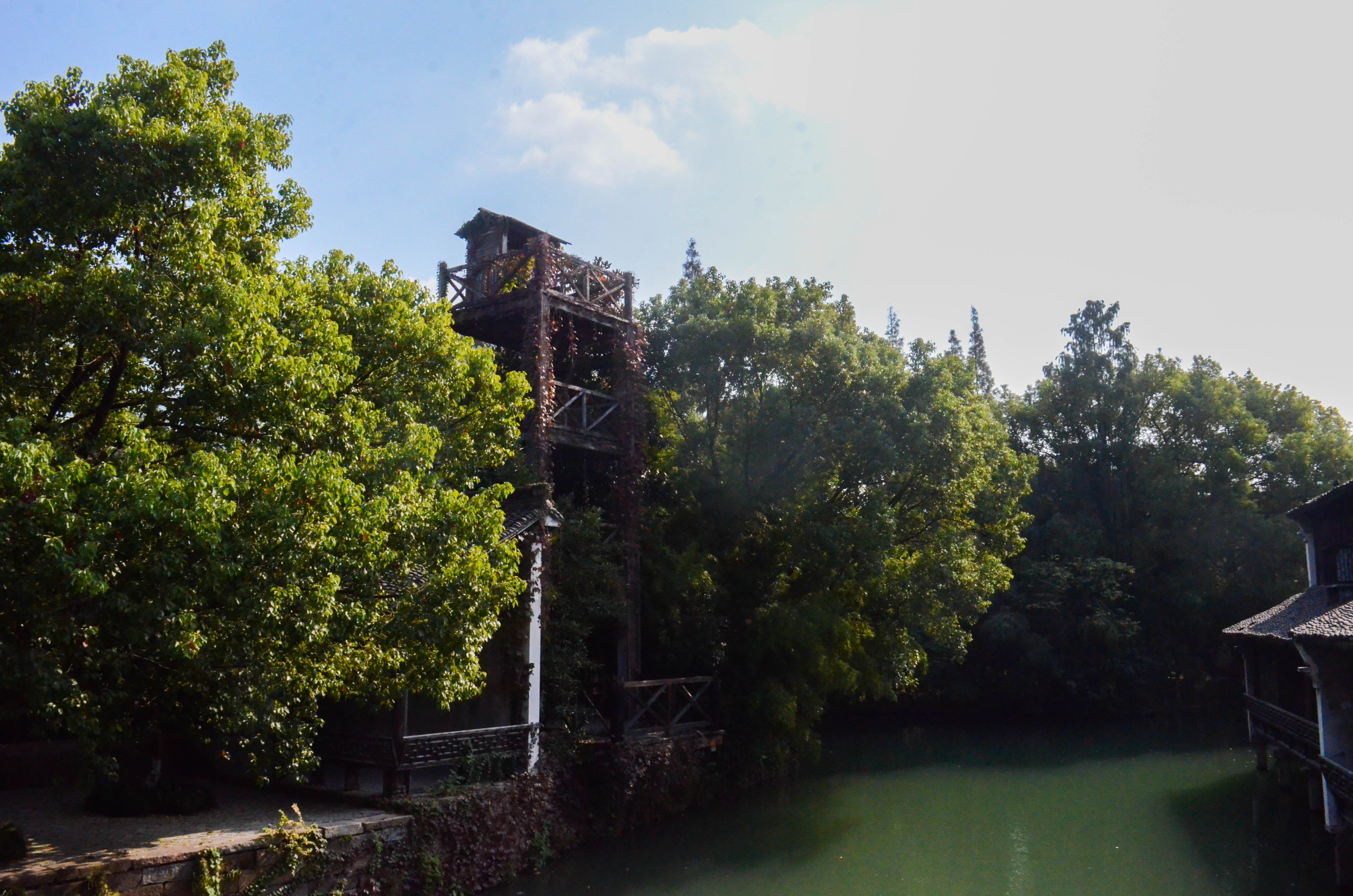
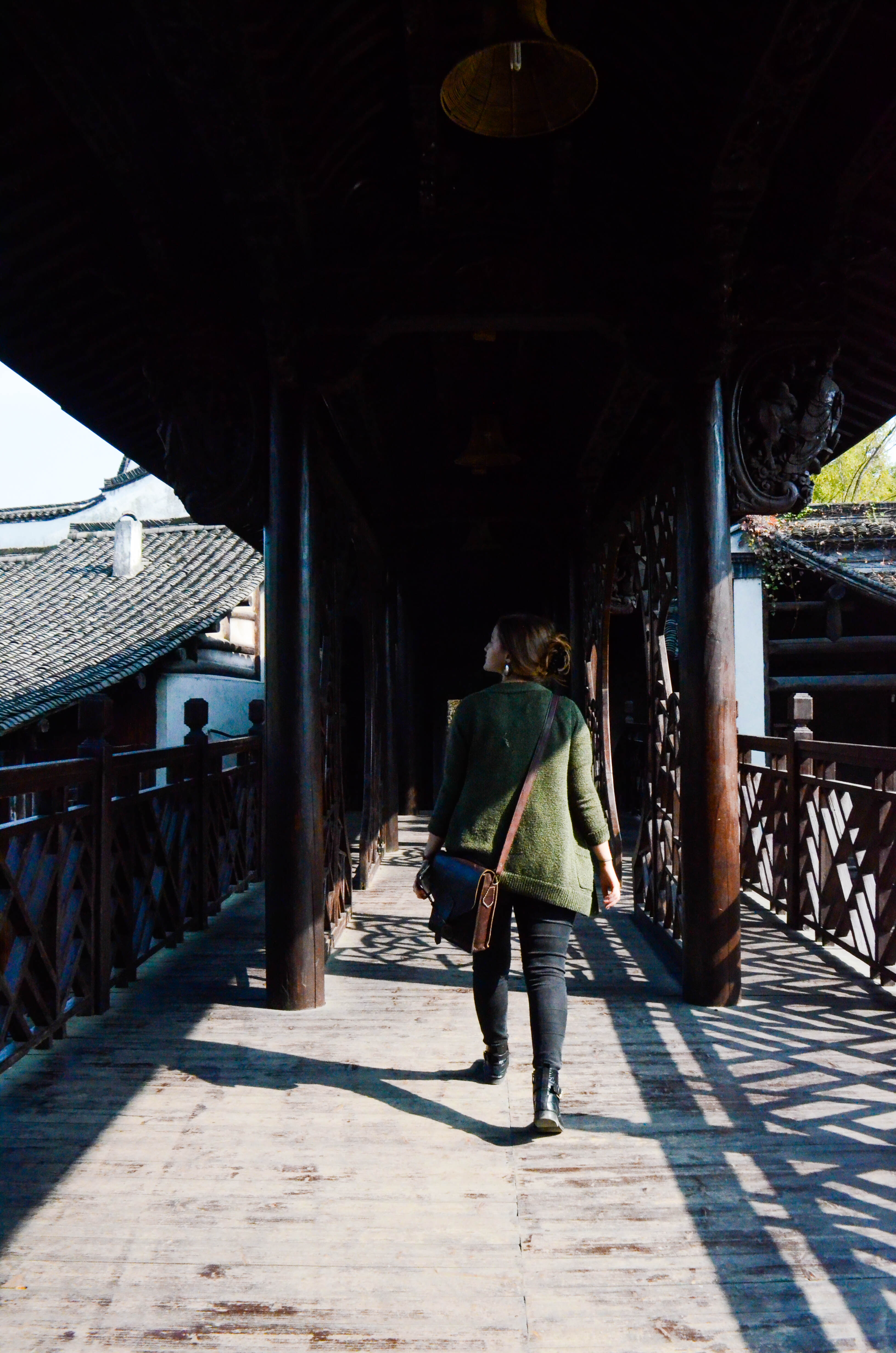
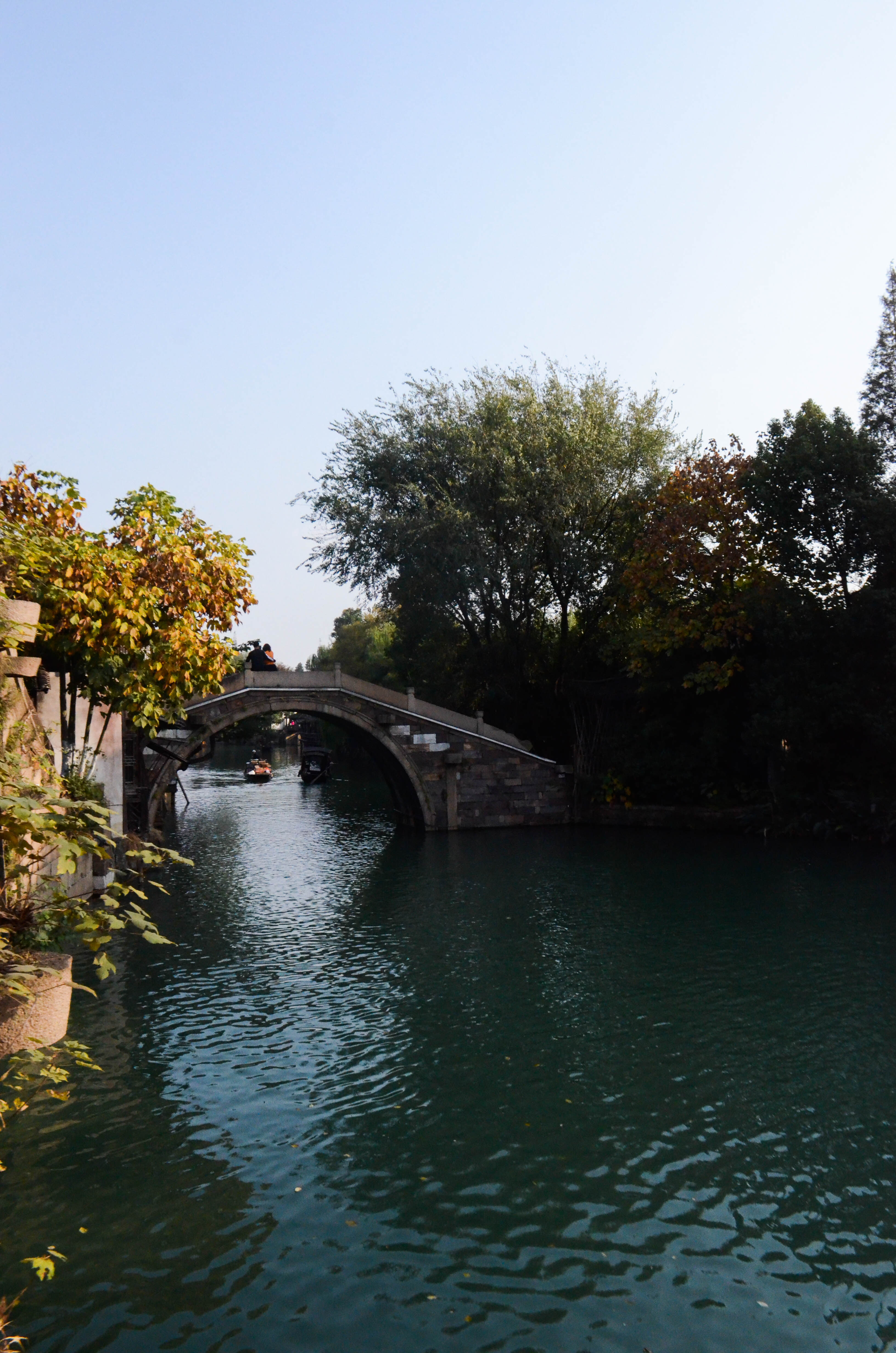
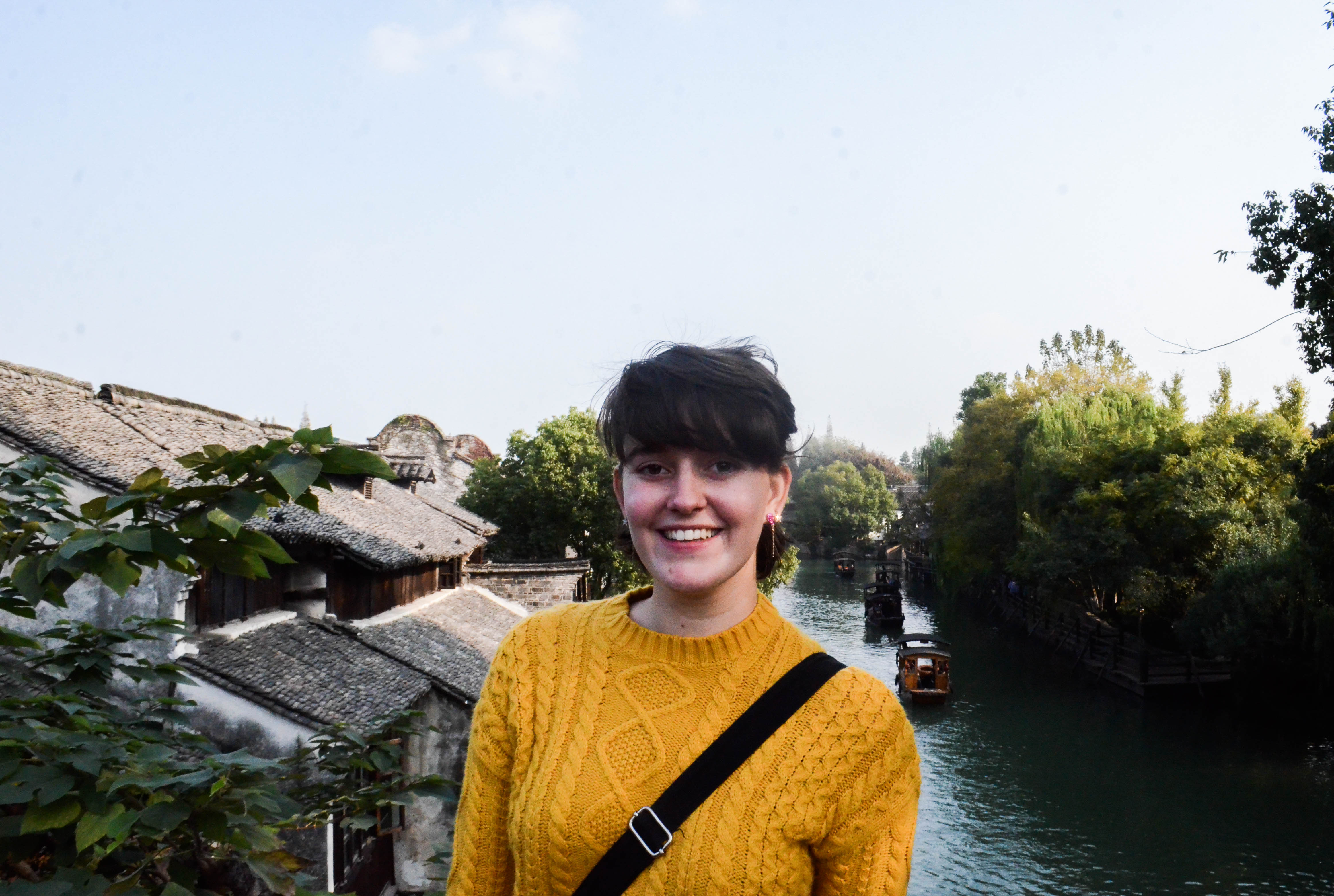
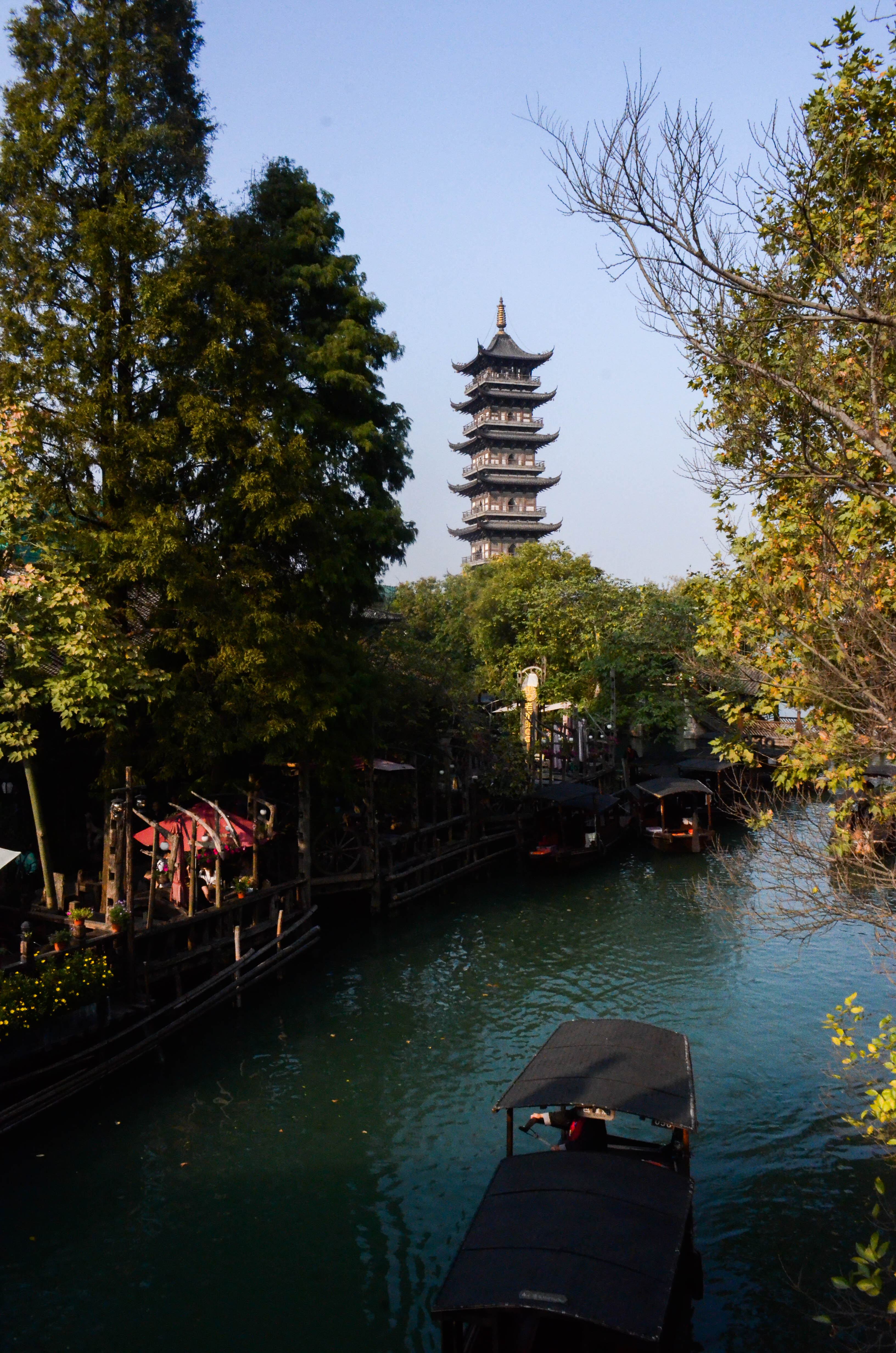
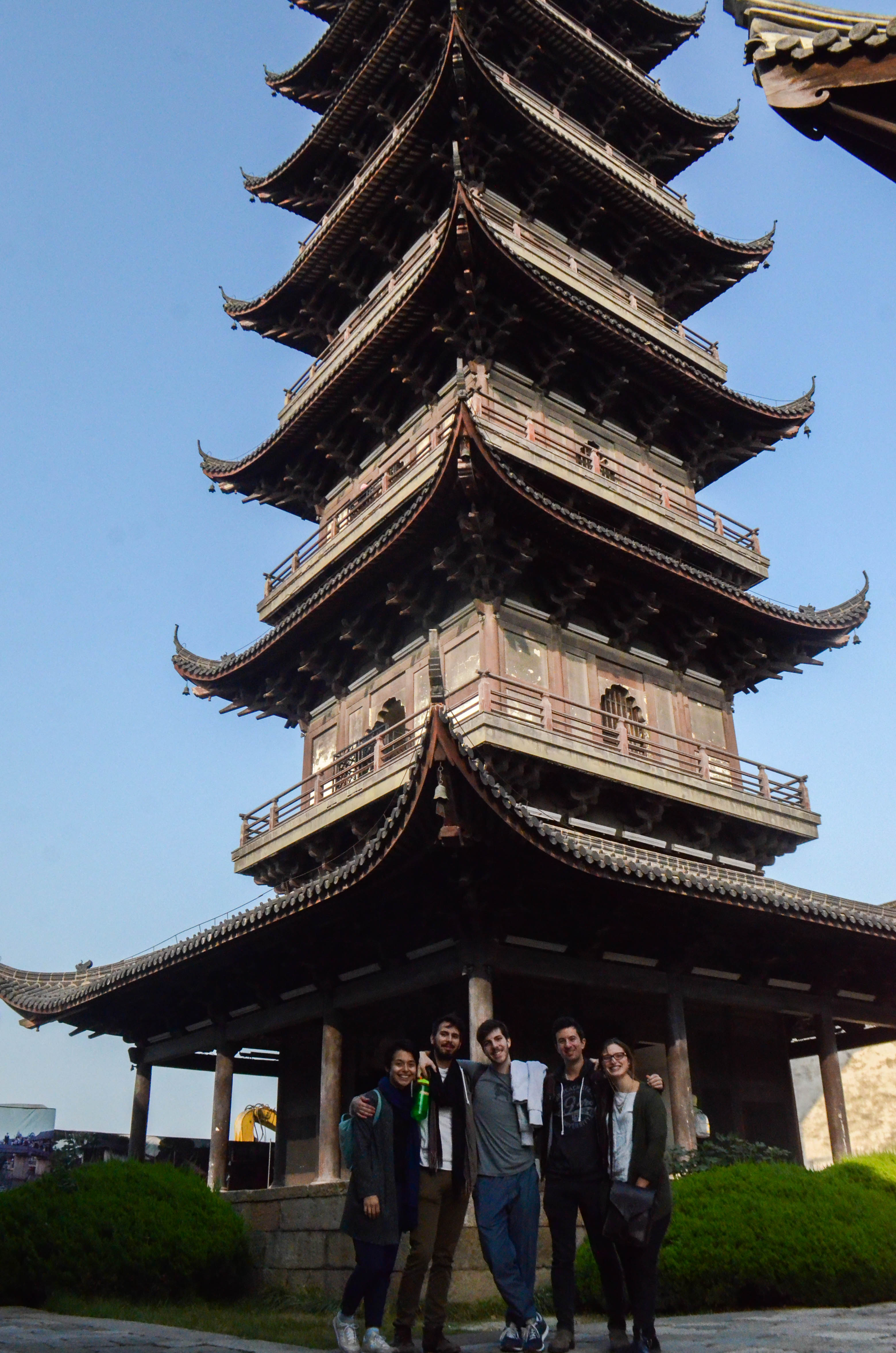
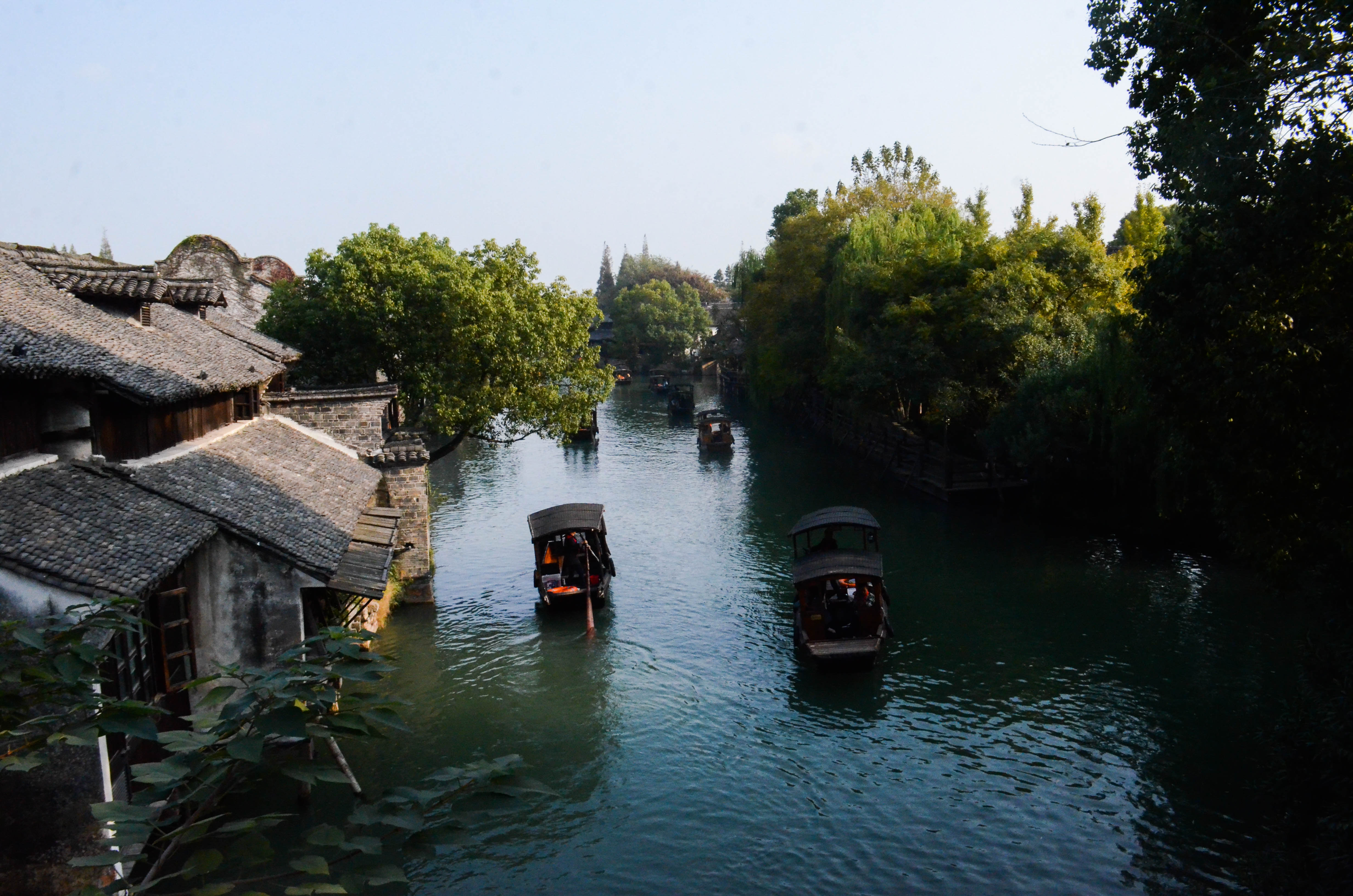
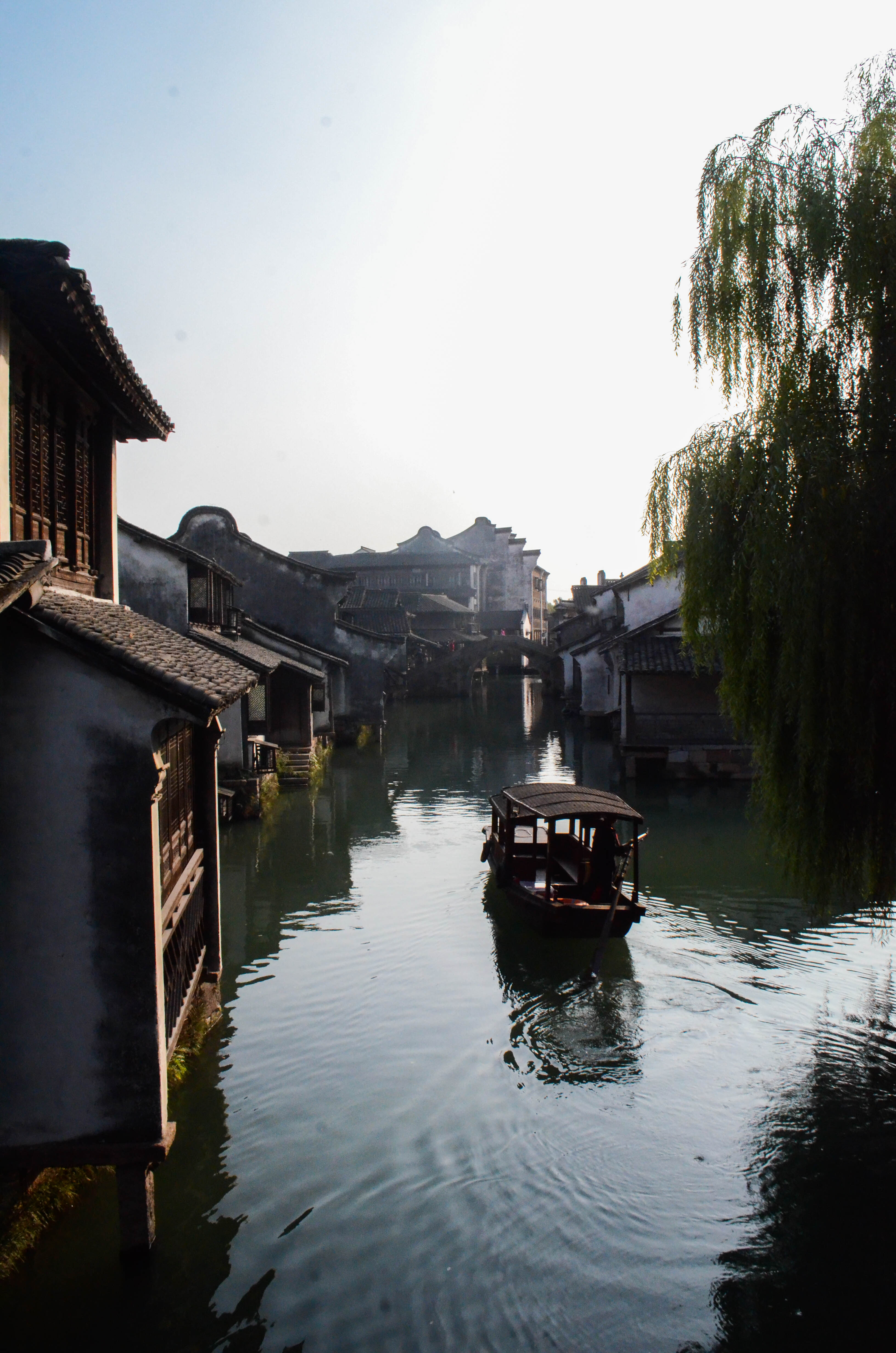
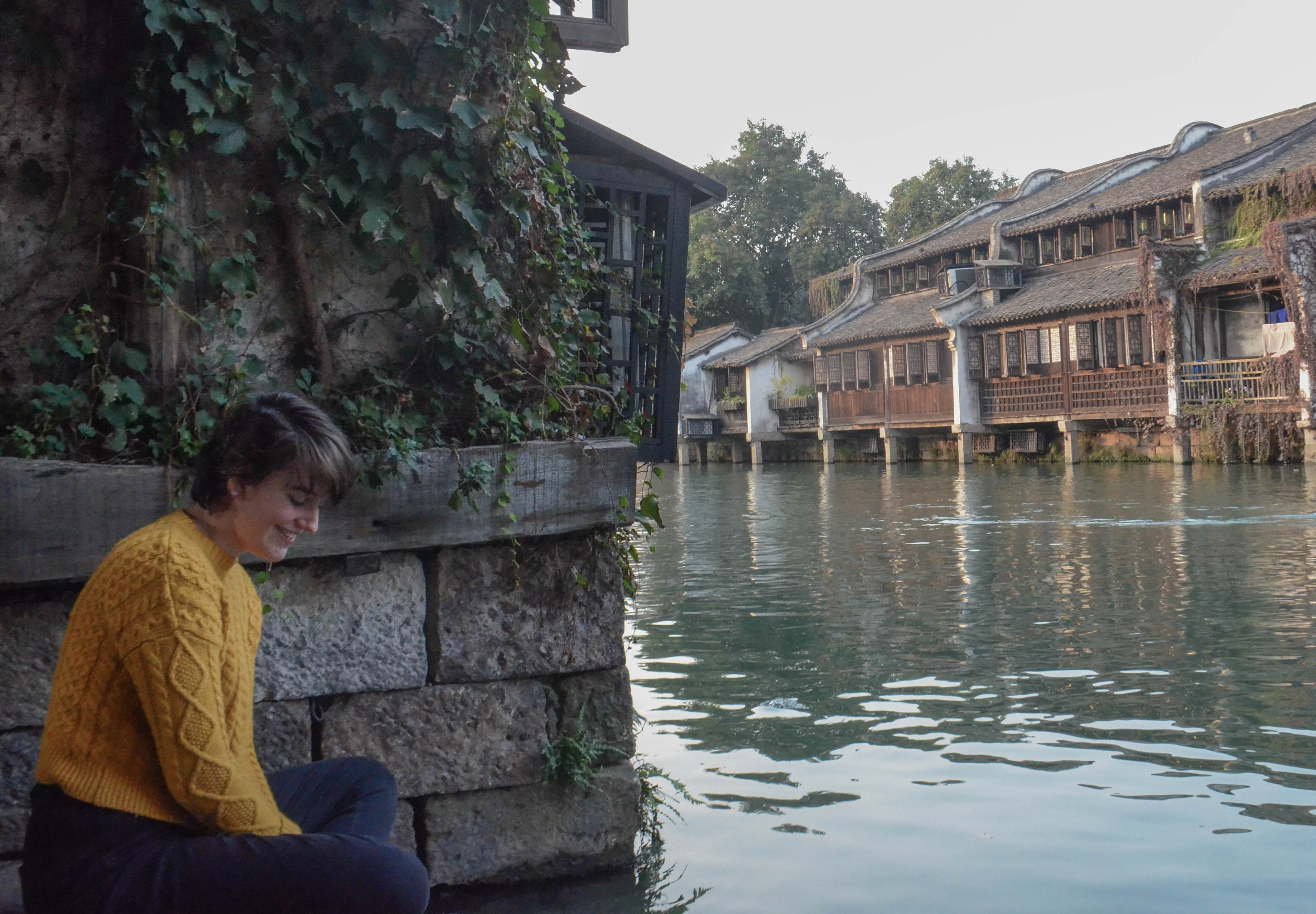
The village is absolutely beautiful, and I get the comparison to Venice, but I would be remiss if I did not share why everything looks so pristine and wonderful.
Wuzhen was a true, authentic, ancient water town back in the day, but Wuzhen today is basically an amusement park. I say this because people no longer truly live here, and the entire village is owned and operated by the Wuzhen Tourism Development Company. That is why you will not see any markers of everyday life in the village – local restaurants, telephone lines, local children playing in the alleys, drying clothes hanging from windows. There is a reason that all of the restaurants have basically the same exact menu printed on the same exact paper with the same exact motifs – they’re all owned by one company and simply operated by employees. Many workers throughout the town even wear matching uniforms.
I noticed a lot of this while walking around, but didn’t have the full context of this “Disneyfication” of the town until I read this article afterwards. It explains how this company basically kicked out all of the local residents and sterilized the town, beginning with the west scenic area and then moving onto the east. They have plans to renovate the north and south areas next.
So, while Wuzhen does have beautiful canals that are reminiscent of Venice, it is lacking the life and vitality that Venice has. Yes, Venice is overrun by tourists, but people still live there, and they infuse the city with their mess and their culture and their realness. Wuzhen is perfect, but a bit too perfect.
I am very glad that we spent the day wandering Wuzhen’s quaint and beautiful canals, but it’s missing a bit of the grit, grime, and messiness of life in China. If I want a tourist fantasy-land, I’ll head to Shanghai Disney.
